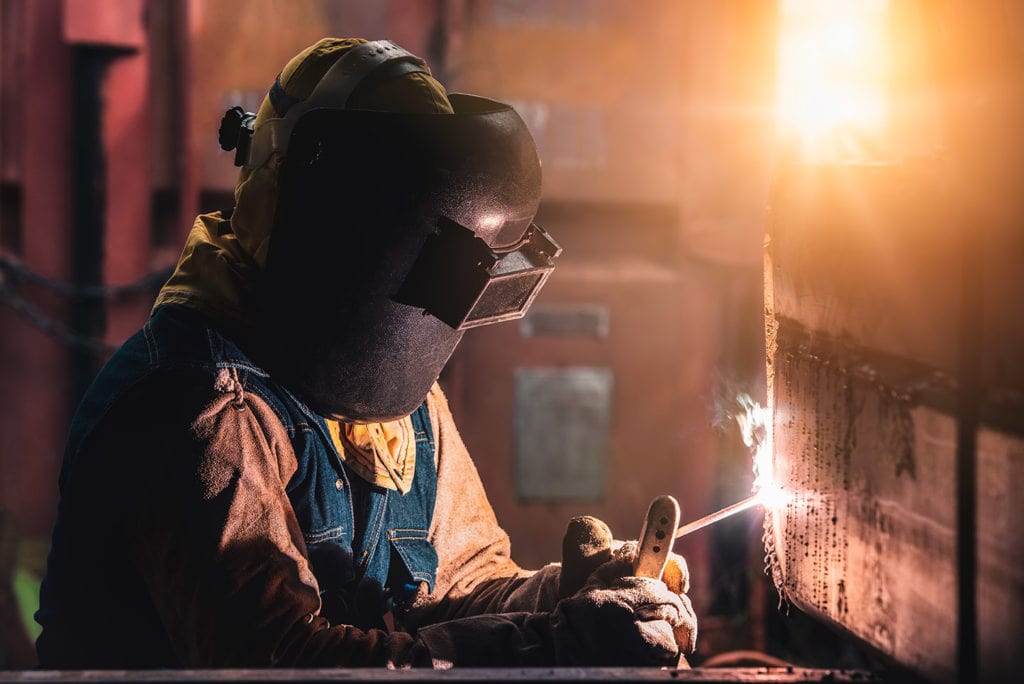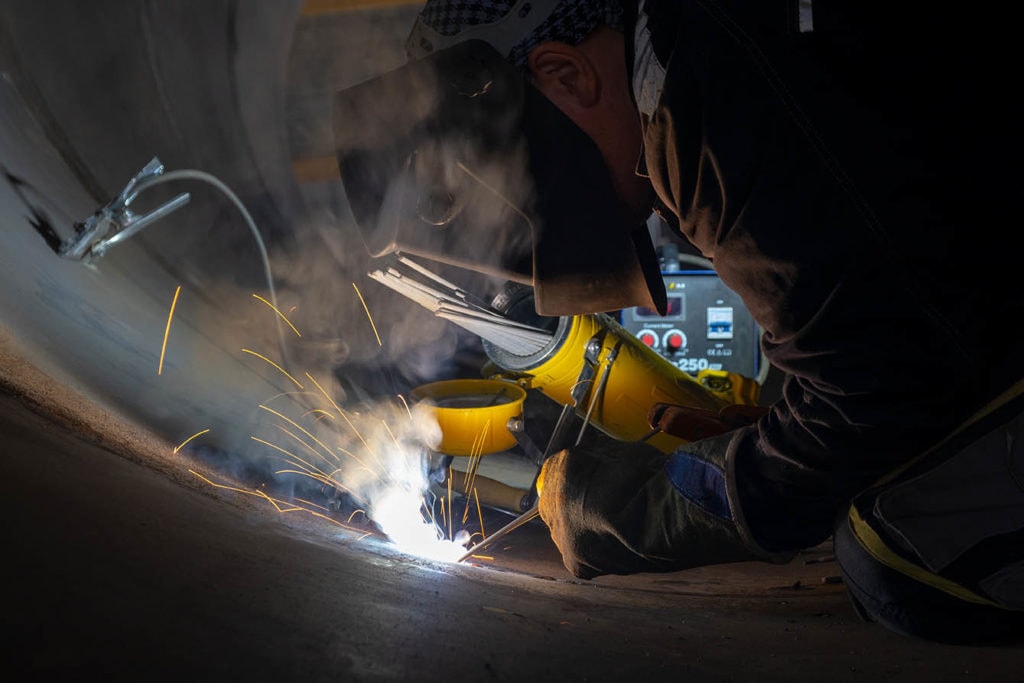What is Reverse Polarity in Welding? A Complete Guide
Last Updated on

When you switch on the welding machine, an electric circuit is formed. It has a negative and a positive pole. Polarity plays a significant role in welding. It’s because selecting the correct polarity influences the quality, durability, and strength of the weld.
If you use the incorrect polarity, it’ll cause a lot of spatter, poor penetration, and your welding arc won’t be regulated.
Let’s now elaborate on reverse polarity so that you can understand better.
Reverse Polarity
It’s a condition where the anode is made positive while the work is made negative. Current runs from negative to positive. Therefore, large amounts of heat appear at the anode, typically ⅔ of all the heat.
It’s usually done if you’re welding thinner plates. Weld penetration will be minimal because less heat is available for the work.

Comprehending Polarity
You’re probably familiar with Alternating Current (AC) and Direct Current (DC) on your welding machine and electrodes. Essentially, these two terms depict the polarity of the electric current that’s formed by the welding machine. It runs through the anode.
The terms “reverse” and “straight” are utilized in welding. You can also convey them as “electrode-positive” and “electrode-negative” polarity, respectively. The former is more explanatory, and we’ll use them more in this article.
An electric circuit has a positive and a negative pole. This is what is known as polarity. DC or Direct Current runs in one direction, which leads to continuous polarity. AC or Alternating Current runs partly in one direction and changes direction on the other half. It alters its polarity 120 times every second with an electric current of 60 Hertz.
As a welder, you should comprehend what polarity implies. Also, identify the effects it has on the welding procedure. With a couple of exclusions, electrode-positive (reversed polarity) causes deeper penetration.
Straight polarity (electrode-negative) causes a quicker melt-off of the anode and, therefore, causes a rapid deposition rate. The condition can change due to the effect of distinct chemicals in the covering.
Several types of protected anodes work on either polarity, although some work on a single polarity. The use of an Alternating Current transformer welder demands the development of an anode that would operate on either polarity. It’s because of the consistent changes in the polarity of the AC circuit.
Although AC has no polarity, AC anodes usually work best with a particular polarity if DC power is used. The cover on the anode indicates the best polarity, and all makers show on the anode container the recommended polarity.
When welding with any specific metal electrode, you have to use the right polarity to achieve correct penetration, even the appearance of the bead, and the best welding results. The wrong polarity leads to poor penetration, lots of spatter, the irregular shape of the bead, overheating, difficulty in regulating the arc, and fast burning of the anode.
Many machines have clearly labeled ends. Also, they tell you how you can set them for either polarity. Several machines have a button to alter polarity. On other devices, you should change the cable terminals.
If you have any queries on whether or not you’re using the right polarity or what polarity is set on the DC device, there are two tests that you can carry out. To begin with, utilize a DC carbon anode, which will operate only on negative polarity.
The second option is to utilize a Fleetweld 5P anode, which operates better with positive polarity than negative polarity.
Let’s now look at the differences between straight and reverse polarity for you to understand them better.
Main Differences between Reverse Polarity and Straight Polarity in Welding
- The anode is joined to the positive end, and the parent metals are attached to the negative end of the source of power.
- Here, electrons are disengaged from the parent plate surface and strike the anode tip.
- At the anode tip, ⅔ of the total arc heat is produced. The rest is produced near the parent plate.
- An unfinished fusion of the parent plate may take place because of less heat production close to the base plate.
- It has a high filler metal deposition rate because a greater portion of heat is produced at the anode tip.
- Here, arc stability and voltage considerably depend on the emissivity of the work material.
- The cleaning of the arc is excellent.
- Inclusion flaws are minimized because of the excellent arc cleaning action.
- With Direct Current Reverse Polarity, contortion and HAZ is minimal.
- DCRP is fit for welding slender plates.
- You can connect metals with low thawing temperatures (like copper and aluminum) through DCRP.
- The parent metals are connected to the positive pole, while the anode is attached to the negative pole of the power source
- When the potential difference is sufficient, electrons are released from the anode tip. They then strike the surface of the parent plate.
- ⅔ of the total arc heat is produced close to the parent plate. The rest is generated at the anode tip.
- You can attain proper fusion of the parent metal easily. Therefore, this eliminates the lack of penetration faults and fusion.
- The filler metal deposition rate is low in the case of consumable anodes.
- Arc voltage and stability don’t rely on work material emissivity.
- It has poor oxide cleaning (arc cleaning action).
- There can be inclusion faults if you don’t wipe the surface of the parent plate well before welding.
- Direct Current Straight Polarity may lead to high contortion and wider HAZ in the welded component.
- DCSP is not fit for welding narrow plates.
- You can join metals that have a high thawing temperature (for instance, titanium and stainless steel) through DCSP.
Understanding Reverse Polarity in Welding
On the power source, this is where the parent metal is connected with the negative end. The anode is joined with the positive terminal.
Check out some of our top trending posts:
- What are Taps on a Welding Transformer?
- How to Build Welding Lead Reels
- What is MMA (Manual Metal Arc) Welding? – How Does it Work?
Featured Image Credit: N_Sakarin, Shutterstock
